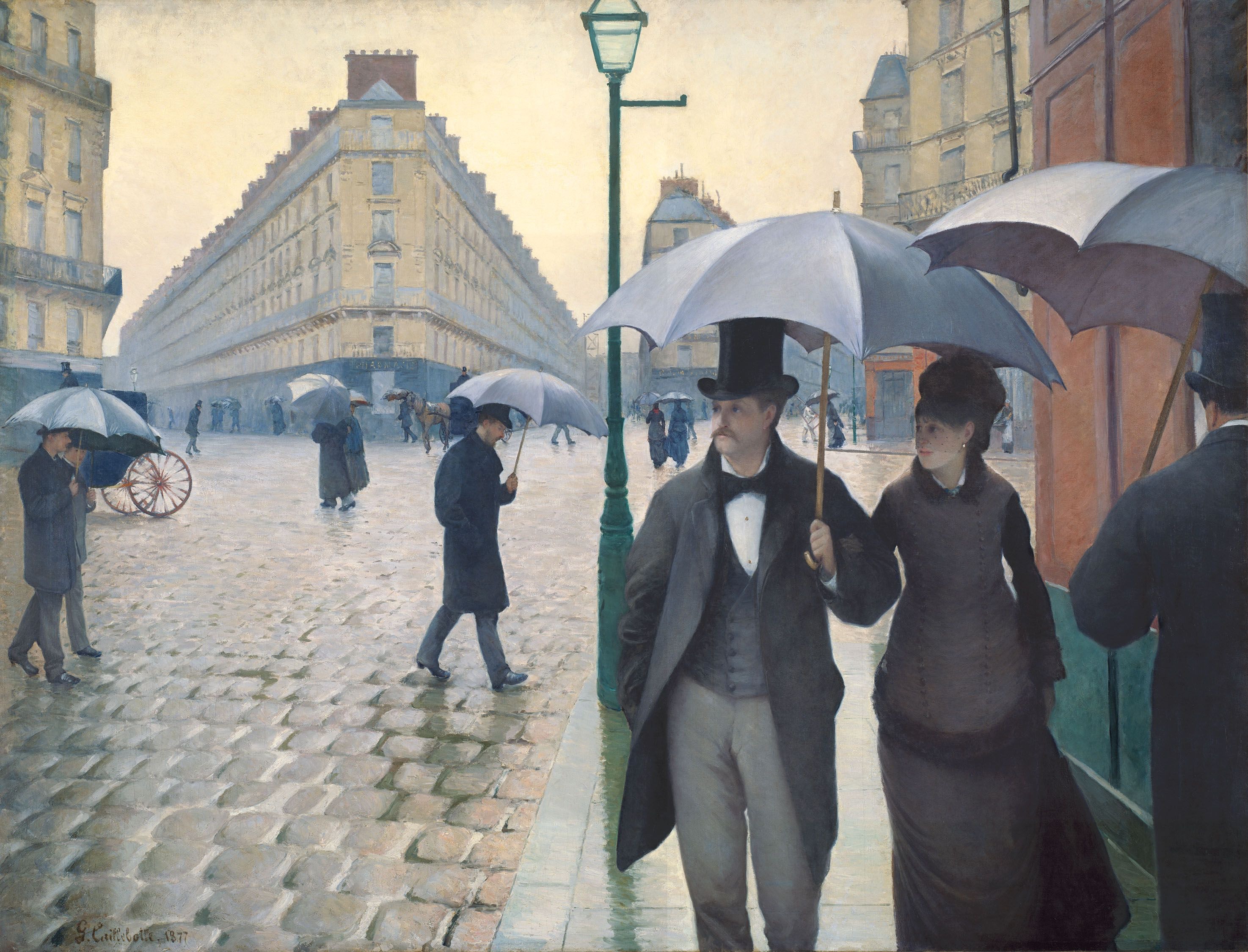Gustave Caillebotte's best-known work, Paris Street: Rainy Day shows a vast cobblestone street, stretching out in front of looming, wedge-shaped buildings. The street is dotted with dark umbrellas that shelter top-hatted men, and women in long skirts — all looking vague and a little disoriented. That was a major subject of Caillebotte's: What the modernization of Paris was doing to its people. In Caillebotte's paintings, men leaning on new bridges seem engulfed by steel girders. Others stand on balconies, looking down at the Boulevard Haussmann — above, yet somehow dwarfed by, the street. It's Caillebotte's perspectives — his wide-angled, panoramic views — that shade the paintings with sadness. The zooming angles and thrusting spaces are daring, compelling, dramatic and totally original. Not himself an Impressionist, Caillebotte loved what those painters and others were doing. He befriended them — Manet, Monet, Renoir, Sisley, Pissaro and Cezanne — at local cafes. Garnot says Manet had the habit of receiving friends at the Cafe Guerbois. Caillebotte decided to do the same thing — hosting the artists once a week. He didn't just wine and dine his artist friends — he loaned them money (in fact, he paid the rent on Monet's studio for a while.) And most importantly, he bought their paintings for top dollar. Caillebotte was very wealthy; his father had made a fortune supplying Napoleon's army with uniforms, bedding and other materials. Gustave inherited that fortune at age 26. He purchased about 64 paintings from Monet, Renoir, Sisley, Pissaro and all the others.




Paris Street; Rainy Day
oil on canvas • 83 1/2 x 108 3/4in